Victorian style in modern interiors
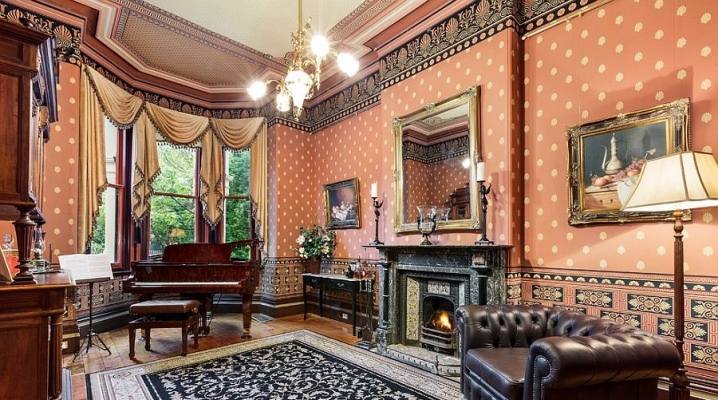
For everyone who thinks that it was better before, classic styles are perhaps the best answer to the question of how to design your own home. The Victorian style is a real gem of this trend.
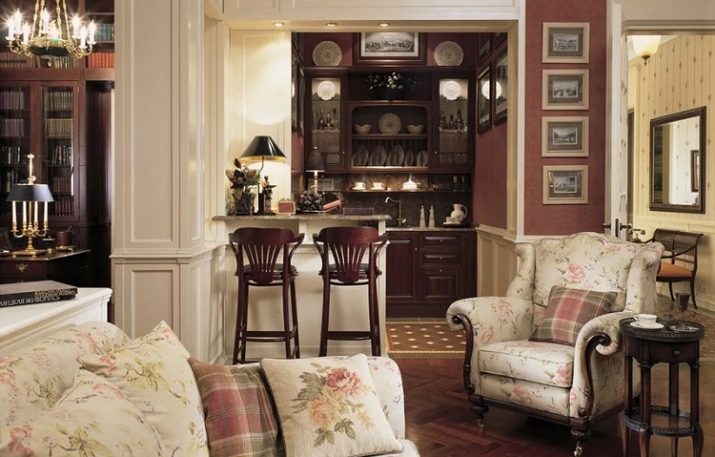
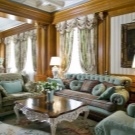
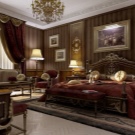
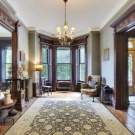
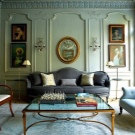
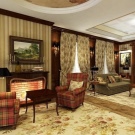
What it is?
Victorian style is a trend of apartment design, which was at the peak of popularity in England during the reign of Queen Victoria, and this is the predominant part of the century before last. In a modern apartment, the following features will be inherent in it:
- a minimum of empty space - everything should be filled with furniture, and the gaps between it - with living plants;
- active use of ornamental subjects - literally everywhere, including not only walls, but also the ceiling, and even furniture;
- paintings and tapestries - in the "museum" performance, that is, in expensive and massive frames;
- drapery in fashion - preference is given to expensive and massive corduroy and velvet;
- Numerous decorative elements are also appropriate, such as framed photos, porcelain in all types and ashtrays.

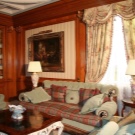
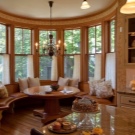
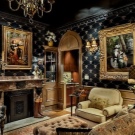
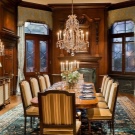

History of origin
The Victorian style did not arise in England from scratch - the necessary conditions were created for this. Primarily because it was the era of the maximum prosperity of the British colonial empire, and all the money, for obvious reasons, flowed to the metropolis.
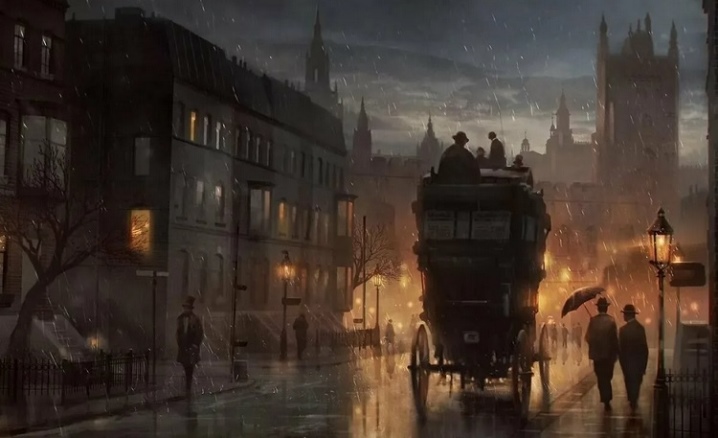
It was at this moment that the prosperity of the modern British was laid - many of them, through the same military service, could achieve significant success and acquire a good mansion of their own, which had to be furnished. Many had money, which means they had to be spent on a grand scale, imitating the clan aristocracy.
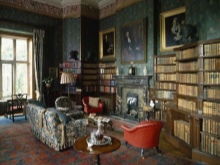
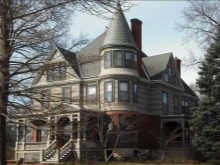

And after all, there was something to spend them on. Colonies around the globe supplied numerous unusual luxury goods from overseas countries - for this reason, the Victorian style still allows a mixture of stylistically completely dissimilar elements. The industrial revolution as of the 19th century in England had already taken place, which means that many household items began to be produced in large quantities and sold at a low price.
In a word, people, some of whom came out of relative poverty, finally got the opportunity to live noticeably richer, because in some places they pursued indicative luxury.
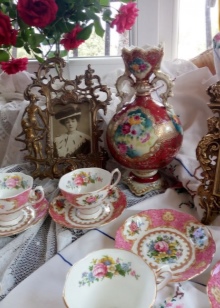
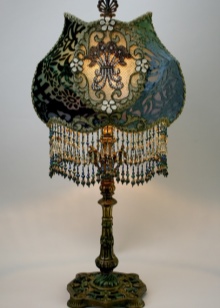
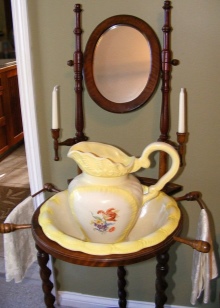
House planning
If necessary, existing housing can be repaired and rebuilt, but it is much easier to lay the preconditions for Victorian decoration at the stage of creating a project plan. This is important when building a private mansion, because many wealthy Englishmen of the Victorian era lived in private houses, and not in the then few high-rise buildings.
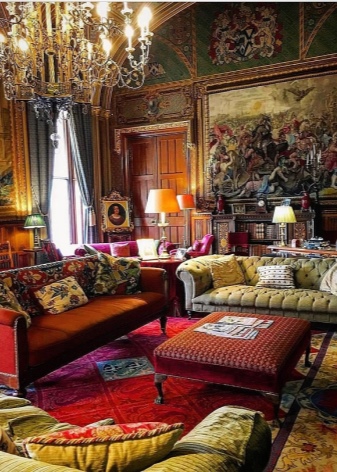
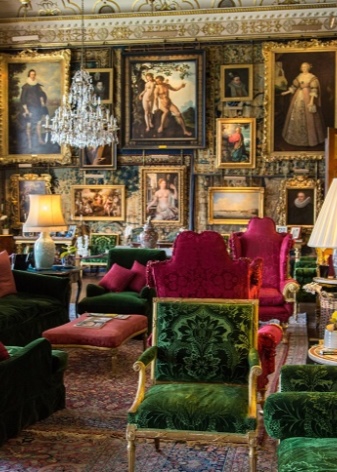
The mansion can theoretically be one-story, but a rich estate should not be small, so it makes sense to highlight separate wings from the main living room in the center. Among other things, already in those days, two-story mansions with utility rooms on the ground floor and bedrooms upstairs were common - such a layout would require a smaller area of the site. It should be remembered that the tightness of modern apartments is the pressure of a lack of money, and in a classic English mansion they did not save on space.
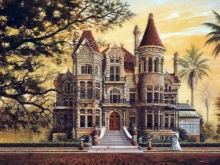
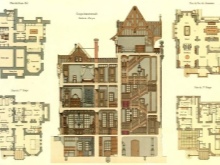
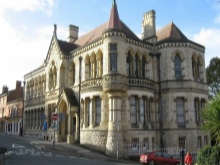
With the layout inside, you can decide to your liking, but there are several rules that it makes sense to follow.
- Since you are building a building from scratch, make sure that it has a fireplace in the living room. Even if you have a warm floor or radiator heating, such an element just needs to be present in the interior.
- In the days of Queen Victoria, people who were not poor could always boast of a good education. There were no other entertainments besides reading, because one's own library was considered a sign of good form.
- You can add to the layout those rooms that we have completely forgotten in our time, for example, a smoking room, where you can calmly smoke in warmth and comfort, without fear of interfering with someone.
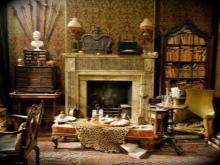


Victorian style tends towards darker tones., and if so, the premises need good natural lighting, which in England, due to its northern position, is a problem. This problem was partially solved by huge windows, which, in turn, required high ceilings.
The latter were also needed in order to accommodate massive chandeliers and an abundance of stucco moldings.

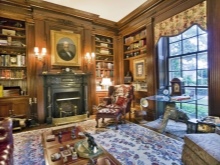
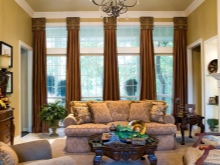
Finishing options
Above, we have already come to the conclusion that the Victorian style is not the destiny of the poorest citizens. In view of this, both furniture and decoration were chosen not only aesthetically attractive, but also of high quality and durable.
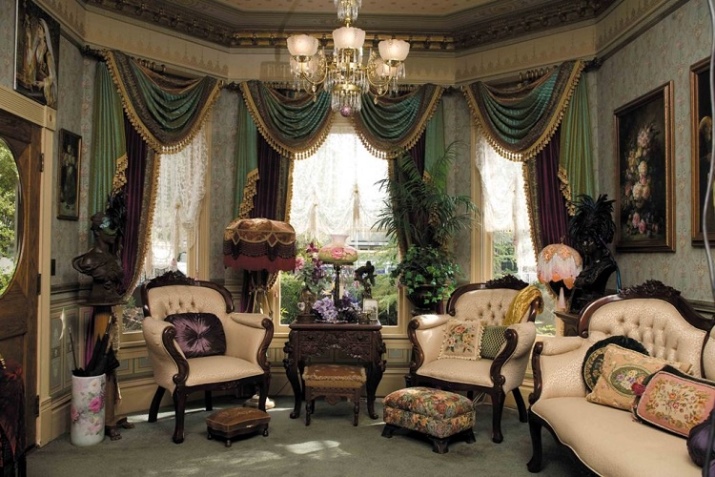
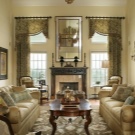

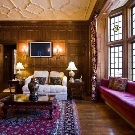
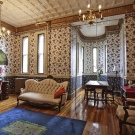
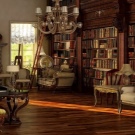
Sten
In the century before last, there were not as many options for wall decoration as today, but there was still no shortage of a variety of materials, due to the abundant colonial supplies. In a Victorian room, you can find simply plastered or upholstered walls, but perhaps it was here that wallpaper was first used very actively.
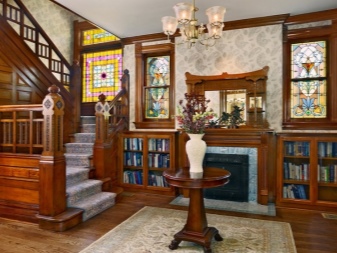

The industry at that time was not yet ready to pamper consumers with photo wallpapers, but colored stripes or even flowers on them were already the norm. Ornamental designs on the wallpaper also came across, but this is more someone's delicate taste than a widespread tradition.
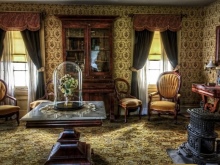
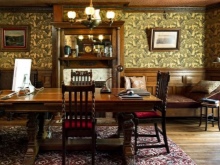

It was also popular in Victorian homes to use a wood apron that covered the bottom of the wall. It was lacquered only with matte varnish - the gloss, in principle, was unusual for that era, but additional decor could be used on top.
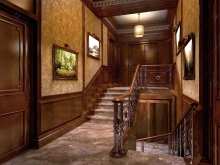
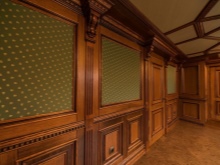
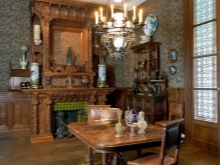
Ceiling
The too simple plastered ceiling to the wealthy citizens of the Victorian era no longer seemed rich and beautiful enough. All the owners solved this issue in different ways - someone preferred aristocratic figured stucco molding, someone liked a beautiful solution in a rustic style - decoration of the ceiling with transverse wooden beams, moreover, from expensive wood species. Coffered ceilings were also in their prime.
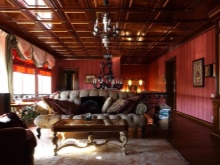
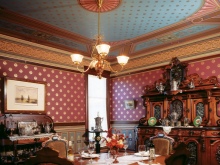

In the conditions of an apartment in a multi-storey building, you cannot accelerate much, therefore today not everything is so pretentious - many designers prefer a simple and flat ceiling, painted either white or a little more exotic beige. Instead of stucco molding, the carving is presented, which is present on the cornices, which must be contrasting in color. Almost the main decoration of the ceiling is a chic chandelier - today it is not a problem to find a model that would have light bulbs in the form of candles.
However, in the Victorian era itself, central lighting was not used so often, preferring spotlights in the most necessary places, so theoretically you can do something a little easier.

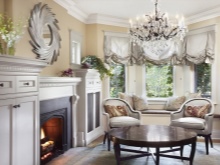
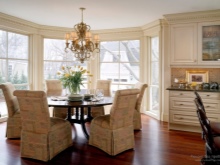
Paul
Modern finishing materials often imitate more expensive "classic" finishes, so there will be no problems with the choice of a suitable floor covering. As befits the royal style, the Victorian direction is best "friends" with parquet, but it is not necessary to make it natural - you can do with both laminate and linoleum.
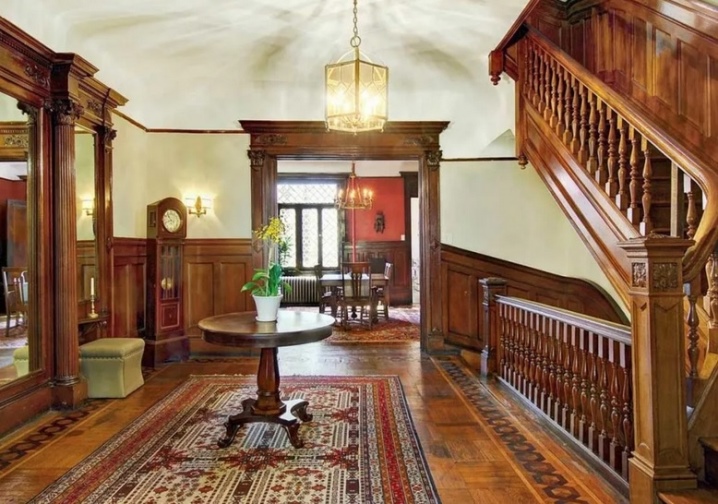
Since rooms with high humidity need something more resistant to water, it is wiser to lay tiles there., which in our time is also capable of imitating wood. In this case, the tone in all cases should harmonize beautifully with the color of the walls and furnishings.
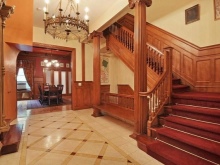
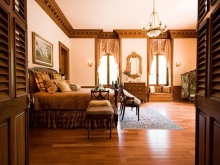

Victorian England had an active trade with the East, so even in those days there was no shortage of good carpets in rich houses. Today they will also be appropriate, but it is necessary to select such an accessory so that it is, if not oriental in fact, then at least similar to it - it will turn out to be authentic. Some designers use carpet as an alternative.
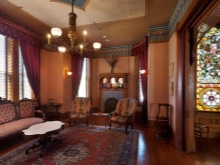

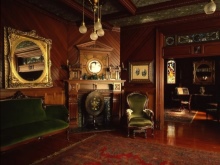
Selection of furniture
Victorian style is not about sophistication, but about massiveness and solidity. Whatever piece of furniture we are talking about, it will not fit into the design, if it is fragile - on the contrary, here you need to use massive, voluminous furniture. In addition to completely predictable beds and sofas, armchairs, tables and chairs, one should also pay attention to those furnishings that are not so actively found in interiors today.
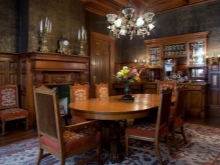
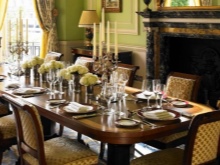
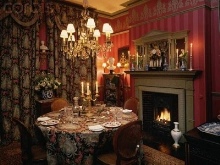
Such pieces of furniture include various dressers and chests for storing things, because there were no linen boxes built into sofas at that time. High grandfather clocks will become the pinnacle of authenticity.
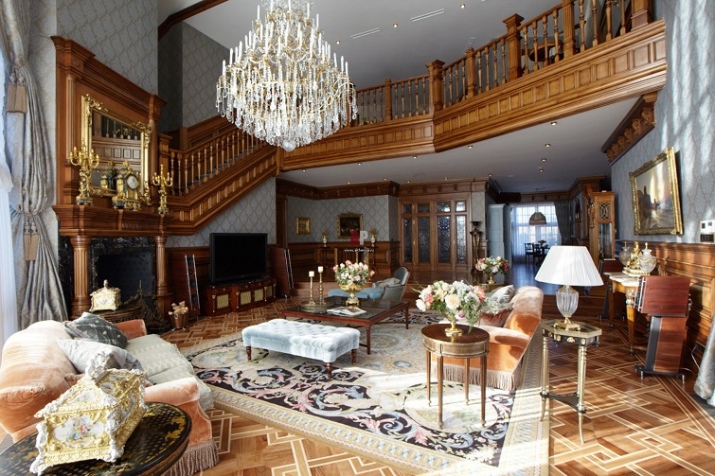
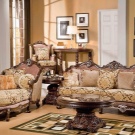
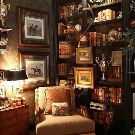
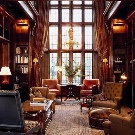
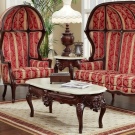
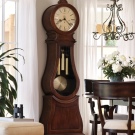
Decor elements and accessories
With an abundance of various objects in the metropolis used exclusively for home decoration, it would be surprising if the British under Queen Victoria did not gravitate towards decorating their own homes. It was literally an era of total heyday for various entertaining gizmos, and the mansion of every non-poor person was not much different from a museum. - here it was possible to see everywhere the most beautiful exhibits brought from distant countries, including old ones.
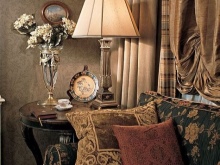
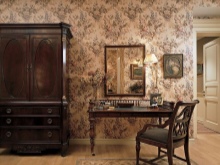
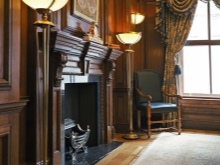
Although by that time consumer goods were already starting to gain momentum, the emphasis in decorating the house was still not on him. If wealth did not fall directly on the current owner of the house, and the family has at least some history, it must be reflected in the interior, for example, in the form of antiques, figurines of past times, various souvenirs fashionable in past decades and centuries.
Wrought iron candlesticks could be used in spite of technological progress - simply because it is very stylish. The British during the reign of Queen Victoria were also very fond of painting and mirrors - all this was necessarily taken from beautiful carved frames.

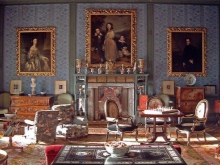
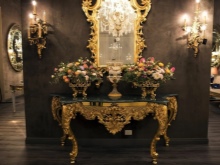
We have already mentioned carpets as a decorative element above - they seem absolutely natural due to trade with the East., but this same trade provided an influx of many other fabrics. In many Victorian houses, they even decorated the walls, and even more so they were decoration. It was always possible to protect yourself from the unpleasant English weather thanks to fashionable roller blinds.
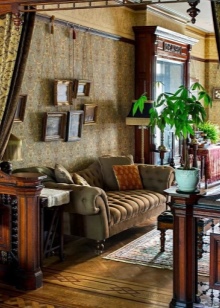

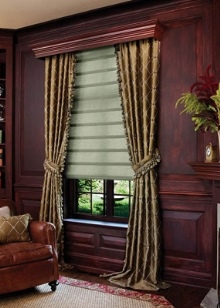
However, the fireplace remained the centerpiece of the decor and interior design in general in Victorian homes. It performed a twofold function - it was responsible for heating the entire building in a cool climate and the lack of adequate alternatives, and it was also a kind of entertainment, because, as you know, you can look at the fire forever. It was always located in the living room (although the house could have had other smaller fireplaces) and was decorated with rich carvings.
Today, in a multi-storey building, you cannot install a full-fledged fireplace, but it is important to purchase at least an electric version of it.
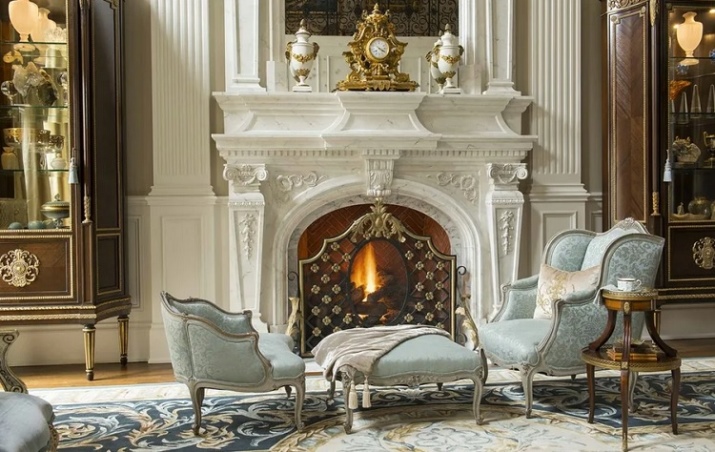
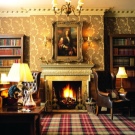

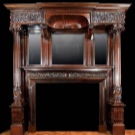
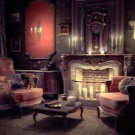
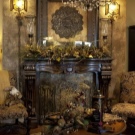
Lighting
England is not a country where the bright sun shines all year round, on the contrary, these are rather gloomy lands, which in classical literature are often described even as dull. In view of this at least at home you had to afford full lighting, especially since we have already said above - rich Englishmen loved to read and often had their own library.
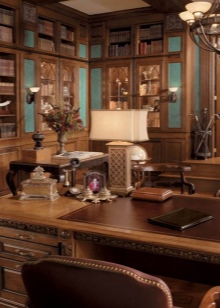
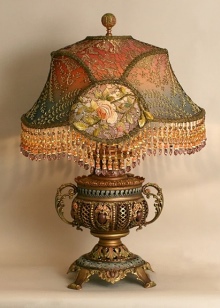
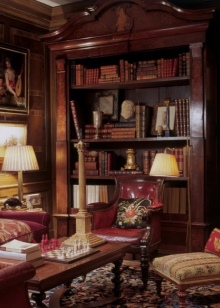
It was during the era of Queen Victoria that mansions became lighter - in the century before last, the fashion for table lamps with lampshades from France reached neighboring England. If the dim light from the main chandelier at the level of a seated person might not be enough, then with such an accessory placed on the reading table, there was no doubt that you would not plant your eyesight.The Victorian style is still characterized by the active use of various spotlights, while the main chandelier is, rather, a formality.
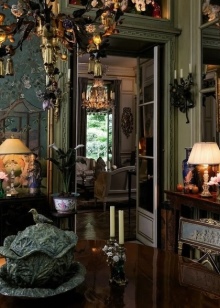
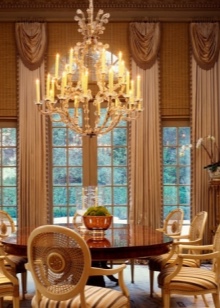
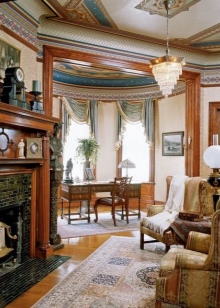
Wherein lamps in the homes of wealthy Englishmen simply could not be limited only by their immediate functions - they simply had to also decorate the room. Bronze bases were made intricate to convey a story, and then they were additionally decorated with hand-painted, colored glass, ceramics or even semi-precious stones.
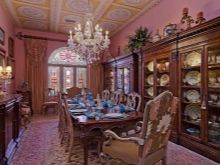
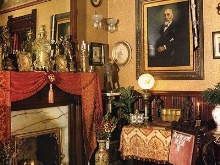
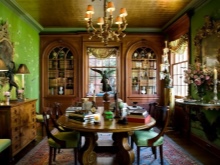
Lampshades in those days were not yet trusted by the mass industry. - they were often sewn by hand using precious fabrics such as velvet, silk and satin, decorated with fringe and embroidery. Many of these lamps were truly unique and at the same time really valuable from an artistic point of view, so a modern designer will have to try a lot to find an analogue.
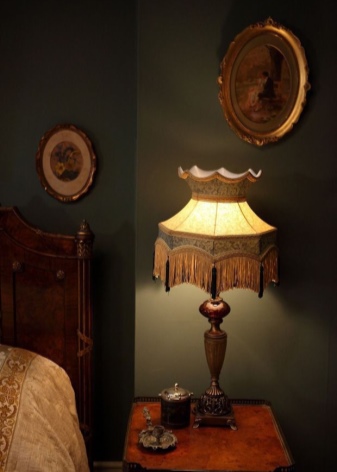
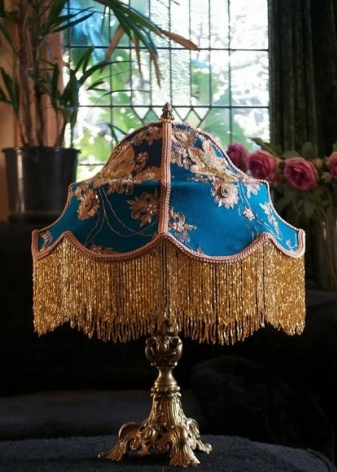
Decoration of different rooms
In pursuit of the exact observance of the style, one should not forget that the Victorian rooms, with all their pretentiousness and massiveness, remained cozy for the owners and guests. To understand where this thin line is, consider how to properly decorate each of the rooms. Wherein do not hesitate to experiment, decorating each of the premises in its own style - Rococo, Baroque, Ethnic or Gothic.
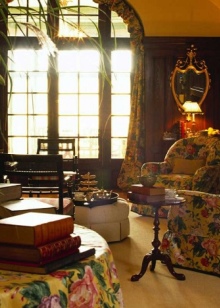
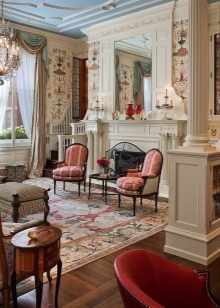
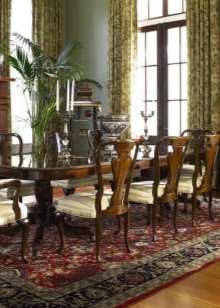
Living room
This room is designed specifically for receiving guests who should not be bored, and it is also here that the owner can demonstrate his worth. It means that in a house that is not poor in general, the living room should be the richest, slightly pretentious.
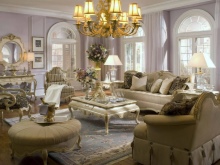
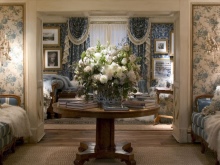

In modern design, most of the money is spent on decorating the living room. - here you need the most believable semi-antique design, which sometimes requires the purchase of real antiques. The entire interior revolves around the fireplace - it is required, and everything else is just attached to it. "Branded" armchairs with high backs are often placed in a semicircle, so that it is convenient to admire the fire; there is also a place in the furniture for a sofa with an abundance of pillows.
The fireplace shelf is a showcase where various souvenirs should be abundantly presented.
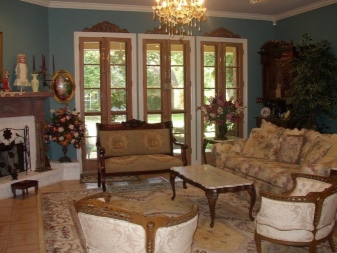
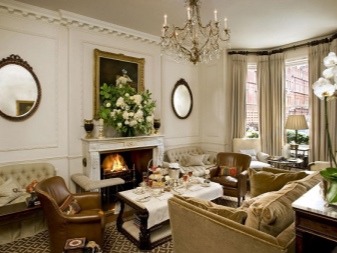
Kitchens
Forget that the kitchen is a purely functional space, because it, like all other rooms in a Victorian house, must breathe consistency and aestheticism. Although in Victorian England guests had few chances to get here, today the kitchen is often used for gatherings, because in fact it is another “branch” of the living room that requires a lot of souvenirs.
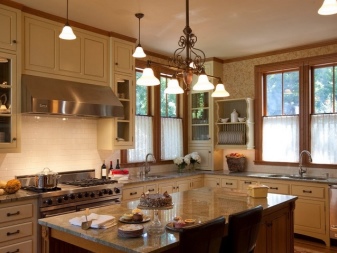
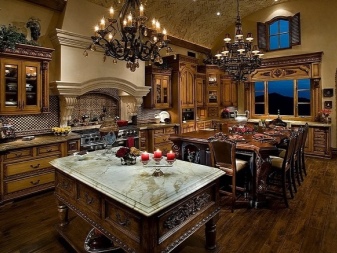
In the century before last, no kitchen equipment existed yet, so it hides in niches and is sheathed with wood. The entire kitchen, in principle, is made of wood, and massive - this is the material for a table with chairs, and for a stately headset. Tiles and tiles are relevant for the design of the apron and, possibly, the floor, but in this case it is worth abandoning modern design in favor of imitation of wood.

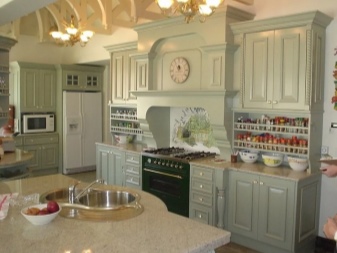
Bedrooms
With a luxurious living room and kitchen, it would be somehow un-royal to relax in a modest bedroom. A spacious bedroom must have a huge double bed. At the same time, it does not matter whether the owner of the house is married - it was not customary to save on comfort in Victorian England. By the same logic, a bed is usually made of expensive types of wood: it is expensive, but it is bought once in a lifetime, it can even be inherited.
There can be no question of storing things in some kind of built-in drawers - there is a chest for this. Although a chandelier is also worth buying, bedside lamps will be used more actively, and now they are definitely a must. The room is covered with hand-painted wallpaper made of silk or other textiles.
The colors are selected in light and warm colors; only the floor and furnishings can be dark accents.
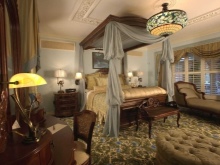
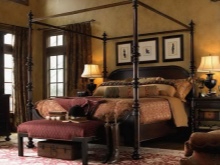
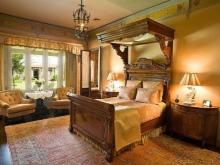
Hallway
Nowadays, they usually save money on the hallway, but according to Victorian principles, this is unacceptable - since some of the uninvited guests still cannot get further, and everyone has to demonstrate their well-being, the corridor turns out to be another "exhibition" room. There will be a lot of antiques and paintings here, and so that a person who arrives while waiting for permission to go deep into the house not only does not get bored, but can also relax, an armchair or even a bench is set up.
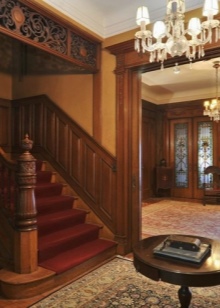
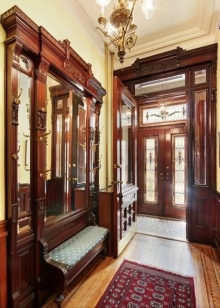
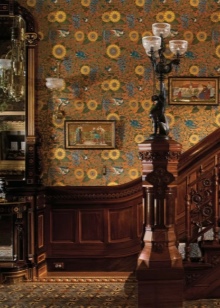
Avoid modern materials and objects - old classics will help out. The mirror should be round and always large. A small coffee table, on top of which a vase with a fresh bouquet is placed, will give a pleasant impression of the house to all arrivals. The umbrella stand combines practical value and subtle color.
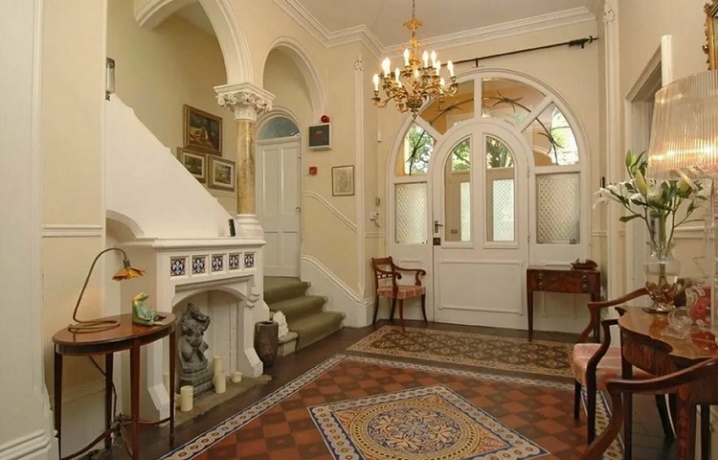
Bathroom and toilet
In some classical styles, there are no recommendations regarding the design of a bathroom, since there was simply no such room in old houses, but in many Victorian mansions, full-fledged bathrooms were already present. Most often these are very light rooms with occasional splashes of brown and red, tiled according to your taste. - either with heraldic subjects, or under the Scottish tartan, or in the style of the East. Having a window in the bathroom, it is a sin not to decorate it with a stained glass window.
In the "original" Victorian mansions, the bathroom was equipped with a fireplace so as not to freeze during hygiene procedures, but today it does not look realistic. But the bath itself can be chosen in the best traditions of antiquity - on curved copper legs.
The toilet itself is most often made fenced off; in a spacious mansion, it would be strange to put it right next to the bathtub.
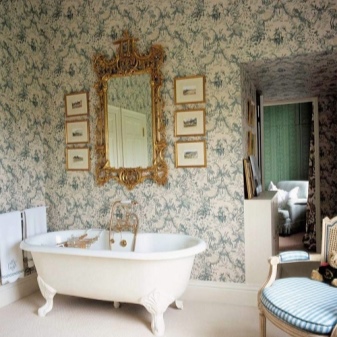
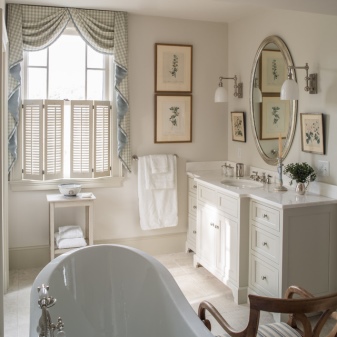
Interior examples
The photo shows a sample of a typical Victorian living room, decorated in a distinctive red and brown color scheme. Antiques and souvenirs are plentifully presented in the interior, but the main attention of all those present will still be directed to the main object - the fireplace.

This example shows what a kitchen might look like. This is not a greasy kitchenette in a high-rise building - you can feel the scale here, you can see the exemplary order. There is no doubt that all the necessary kitchen equipment is present, but at the same time it is almost invisible.
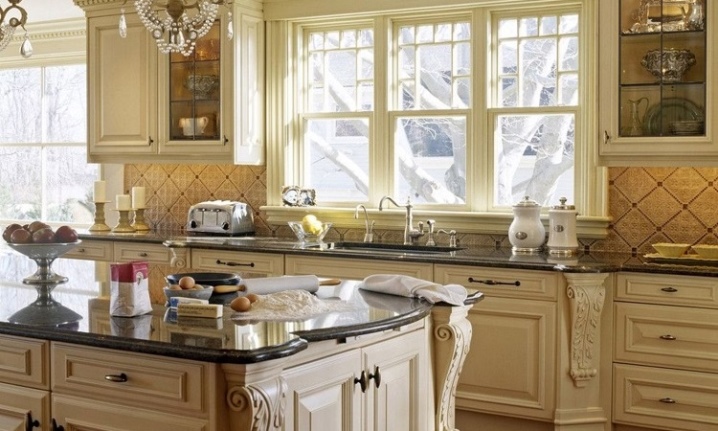
The bedroom in the photo looks rather dark, but that's only because the curtains are drawn, but we can confidently say that it is great for those who like to sleep longer. Everything here is focused on maximum comfort, and tea accessories are already waiting on the table.

A bright bathroom is much more spacious than those bathrooms that we are used to in cramped high-rise buildings - someone would joke that a one-room apartment would fit on this square. Although you don't really need that much space, the style rules dictate that you can walk in the bathroom.
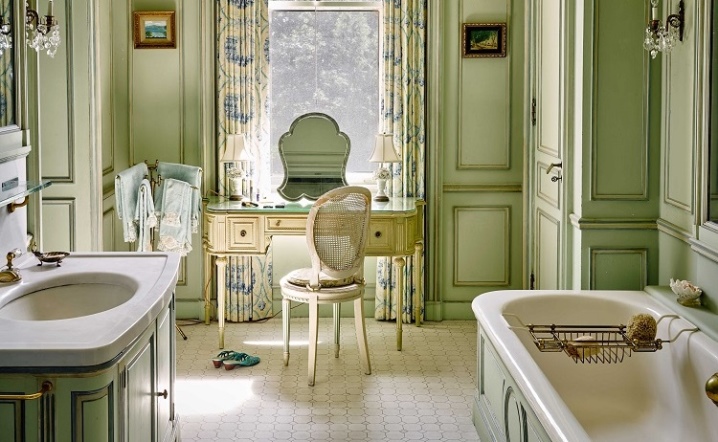
In the next video, you will find the main features of the Victorian style in the interior.













The comment was sent successfully.